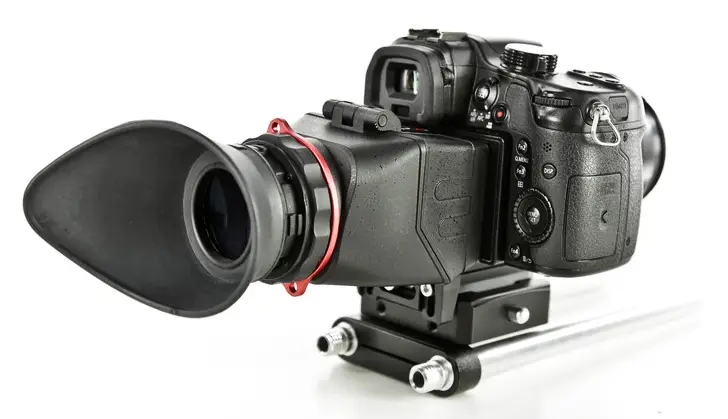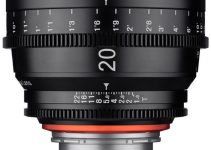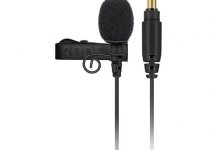For the majority of filmmakers, Canon DSLRs are becoming more and more a thing of the past, yet there are people who still prefer to use them on certain occasions. Nevertheless, the free Magic Lantern firmware on Canon DSLRs remains a powerful asset to the DSLR crowd. The colour fidelity and resolution one can get out of these tools when shooting in 14-bit Raw video rivals even some of the latest much more expensive cameras available on the market these days.
Recently cinematographer Alex Soloviev had the chance to capture the beauty of ocean creatures in their true glory using a budget full-frame Canon 6D and ML Raw video recording. The result is more than impressive and I’m really excited to share this hypnotic piece of art called “Endless Gravity” with you right away.
Endless Gravity // 14-BIT RAW from Alex Soloviev on Vimeo.
Believe it or not, the entire film was shot in an aquarium, not in a real location in the ocean, as many of you would probably guess. Yet, this is the last thing I would have thought if Alex hadn’t shared this fact in advance with me. Actually, this was the biggest challenge for him while working on the film to make it look like it was shot in a real ocean rather than in an aquarium.
On the technical side, the whole film was shot using Canon 6D in ML RAW video mode with a mix of 1080p and 2.5K shots. The latter were downscaled to 1080p in post. For the HD shots, Alex used an optical anti-aliasing filter to eliminate aliasing. As for the lenses, he utilised the Tamron 24-70mm f/2.8 zoom, the Canon 50mm f/1.4 and the Nikkor 105mm f/2.8.
Most of the shots were done at f/3.2 and f/3.5 at ISO 800. The whole thing was graded and stabilised in Davinci Resolve Lite, exported to Cineform 10-bit .avi files, then finally edited in Sony Vegas.

Due to the fact that Alex was filming in an aquarium he wasn’t allowed to use any bigger rigs in there, so instead he utilised a Kamerar QV-1 View Finder and the body of the camera itself in a hand-held style and tried to stabilise the footage as much as he can.
For some shots he also used Marumi’s CP-L filter, to eliminate the annoying reflections from the glass. Some parts of the footage were shot in 30p mode and slowed in Resolve to 75% using Optical flow process.
This is not the first occasion when the cinematographer uses Canon 6D for his productions. If you are looking for more inspiration I highly recommend you to check out the rest of Alex Soloviev’s amazing work available on his Vimeo account.
[source: Alex Soloviev]
Disclaimer: As an Amazon Associate partner and participant in B&H and Adorama Affiliate programmes, we earn a small comission from each purchase made through the affiliate links listed above at no additional cost to you.




The film is absolutely great, thought the video quality is unimpressive and the tentacles are full of aliasing.
a RAW image shot on a sensor that line skips is still going to be plagued by aliasing….as seen here
Where is the information that it’s a mix of 1080p and 2.5K shots coming from? Those resolutions are not even possible in RAW on 6D! The author himself says it’s been shot at 720p in 30 and 48 fps.
This is what Alex claims. He sent us an email with an in-depth insights on his workflow along with a request to share the film on our blog.
720p he says about uploaded version to vimeo, dude. 2.5k if possible on 6d with latest builds in crop mode and non crop is 1824 so its almost 1080. Everything is correct in this article.
Thanx for sharing to 4k team.
Thanks mate
This is from Alex: “720p version i meant only in description on Vimeo be cause i uploaded film there in 720, original is film is 1080p of course. 6d max resolution in crop mode is 2688 so its more then 2.5k even, shots i mentioned were in 2560 and downscaled to 1920 in resolve ” hope this clears it up. Thanks
Amazing shots
You mention that canon dslrs are becoming a thing if the past….? Can you elaborate please? Im just getting into video, and i have a canon 6D… i woul appreciate any info that would help me avoid wasting more money on this system when i should be investing in whatever is pushing out the dslrrs. Thanks in advance.
I have a 6d and it is amazing for photography. However, videography, if you want to have amazing quality, the 6d is not great. The amount of autofocus points really limits its abilities for video. For the price though, it is good to practice on. However, the best under $3k is the Sony Alpha as7II, even better than the 5d mark iii because it has killer built in stabilization, and there is a mount so you can use your canon lenses. I did handheld with a monopod and the footage looked like I was using a glidecam!
Thanks for the reply… I was looking at that camera, but didn’t want to invest in a new system because the “photo” portion wasn’t too good… but I didn’t know about the adapter for canon lenses. I guess I have to do more research. Thanks again.